The word? Kids. Organization is all well and good, but what if you have kids in the mix?

Kids usually make life messier, and they can also make it difficult to stay on task when cleaning or organizing. When you’re being interrupted to attend to someone else’s needs, you have to re-motivate yourself to go back to cleaning every time. It can be a struggle!
However, even though it can be hard to keep up with cleaning when kids are living in the house, you can still successfully have a clean, organized home… at least some of the time!
Spoiler alert: Why not involve them?
Your kids can and should help! You’ll be teaching them good habits for the future.
Here are 5 tips for getting kids involved with your decluttering projects:
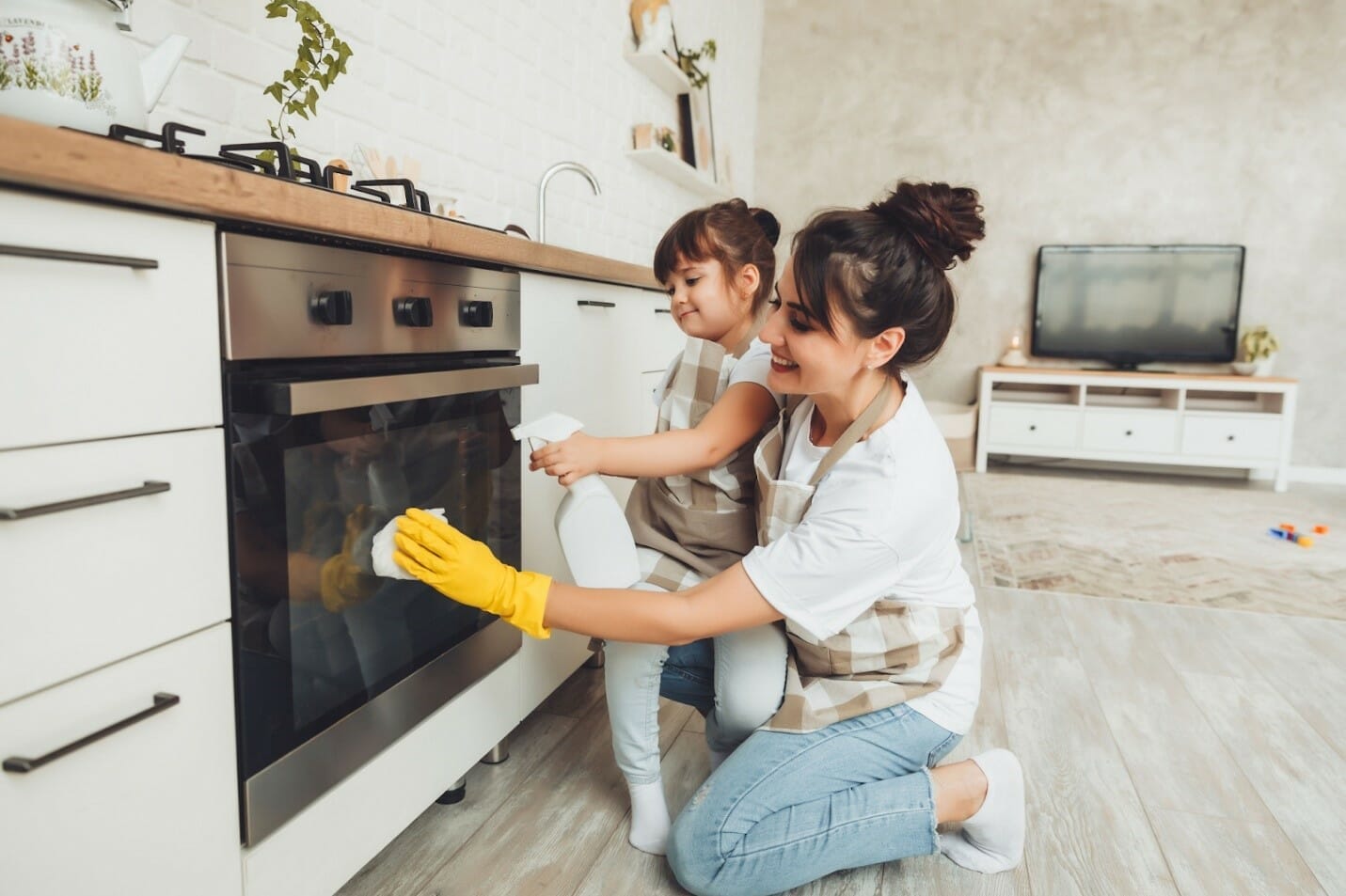
Depending on what needs to be done, you can either enlist your kids’ help or find ways to distract them.
If they’re elementary-aged, give them something simple and bite-sized to do, like sorting items into a bin or small cleaning tasks with nontoxic chemicals. Younger kids can make it more of a game—you can give them a cloth and water to “pretend clean,” ask them to sort colors of items on the floor, or something similar.
If they’re teens, they can be counted on to take on some real tasks.

Your kids probably won’t clean things to your standards. However, that doesn’t mean they
aren’t helping, or that you have to redo their work—at least not every time!
When you do this, your kids are taking on responsibilities, learning new tasks, and trying to help you. Their version of done will be better than nothing being done at all.
When you delegate tasks to avoid getting overwhelmed, you’re lightening your load and getting something done that might have been otherwise ignored.
You don’t want to micromanage your kids, but you can gently give them good advice to help them clean effectively. Creating checklists or sticker charts can also help—these tools are motivating and can help kids take ownership of their responsibilities.
When we turn chores into games, our brains receive a burst of motivation that inspires us to do the activity again. (This strategy works for adults as well as kids!)
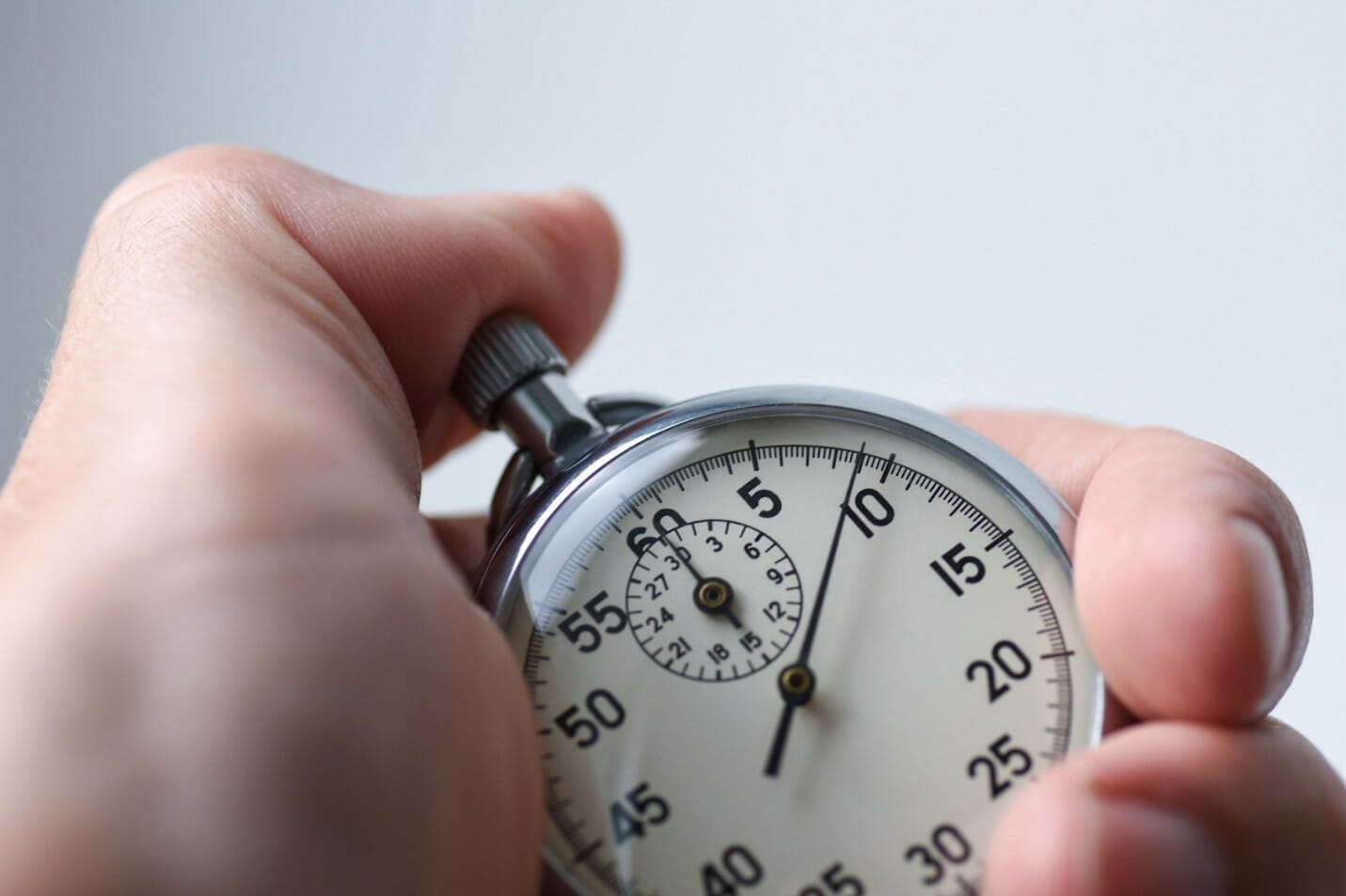
Try making it a race or setting a timer. You can turn anything into a competition or challenge and it becomes instantly more exciting.
Connect a cleaning habit with another one. For example, every time your kid brushes their teeth, they wipe off the counter or put away 5 bath toys.

Do you have items in your closet that still have the price tags attached? When you bring something new in, you need to take something old out. Whether it be your closet, car, or garage, the same rule applies.

Label storage areas clearly so kids know where to put their toys. The more you help them succeed with simple tasks like this, the less work you’ll have to do and the more accomplished they’ll feel.
When birthdays or holidays are coming up, encourage your kids to choose some items to give away before the big day to make space for new ones. (Or do this yourself if your kids are too young to understand.)
Give kids an incentive to complete their tasks. For example, if they declutter 25 items from their rooms, they can go on an outing with you, receive a certain amount of screen time, have a friend over, etc.

When kids see that you value decluttering, they will also learn to value it.
Don’t forget to make use of the resources available to you to give yourself a break. That’s why just about every parent is in Level 1 or Level 2 of the hoarding scale we reviewed earlier—at the very least.
Try hiring a babysitter or mother’s helper for a few hours.
If it’s financially possible, hiring a housekeeper or maid can remove some of the burden of cleaning off your shoulders.
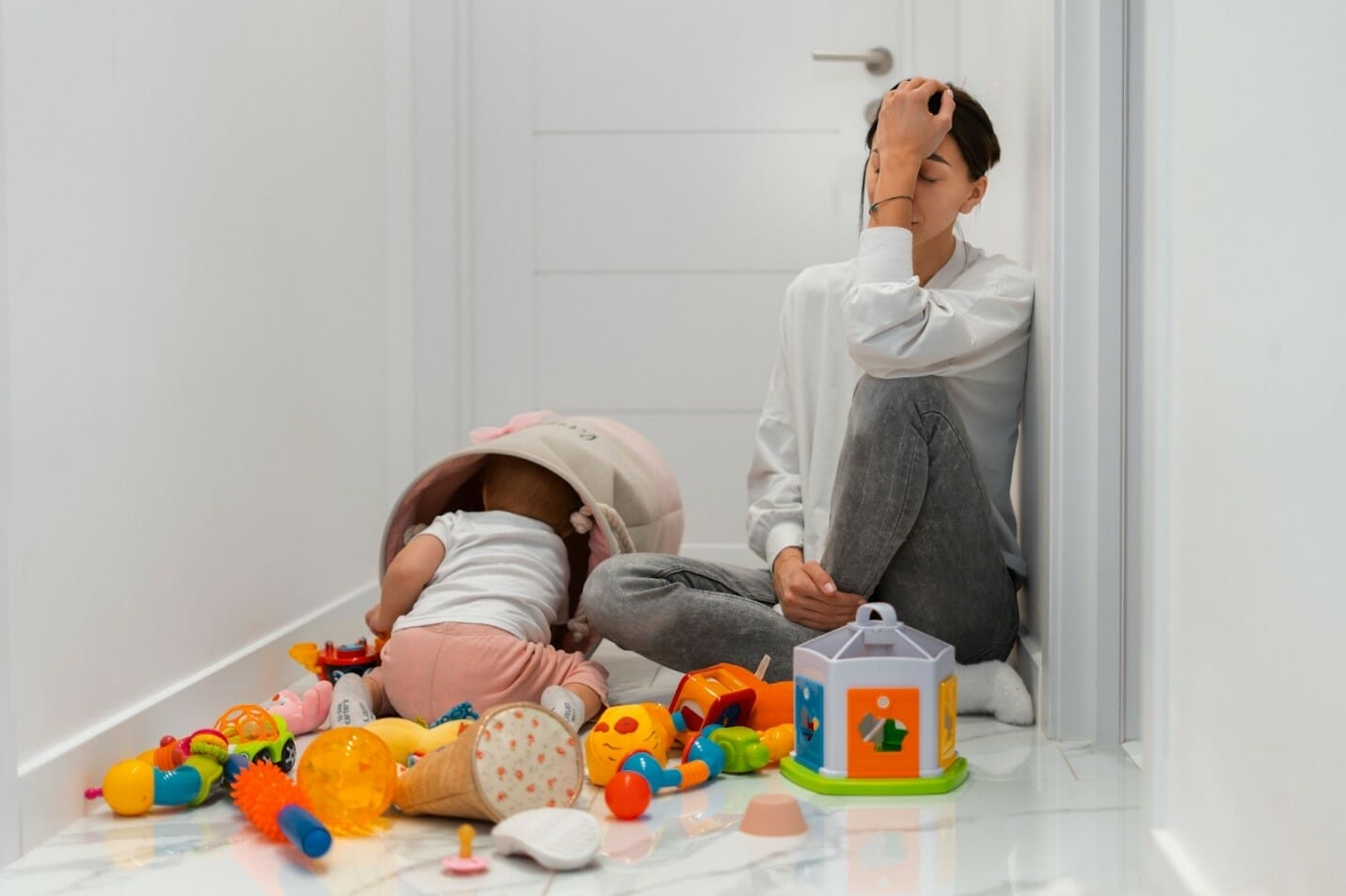
It’s probably not a season where you’ll have a pristine home all the time, but spending even a little time decluttering can help you feel more sane.
Get started on your journey to living in a home that feels comfortable and welcoming.
Here are the 5 steps to efficient cleaning:

Some people may hang onto excess items or animals that can compromise the health and
safety of the home. It’s important to keep up on cleaning and pay close attention to your common trouble spots so your home can remain safe and healthy. Common categories that stack up easily include:
Are you holding onto books you’ll never get to? Do you have stacks of books you will probably never open again?
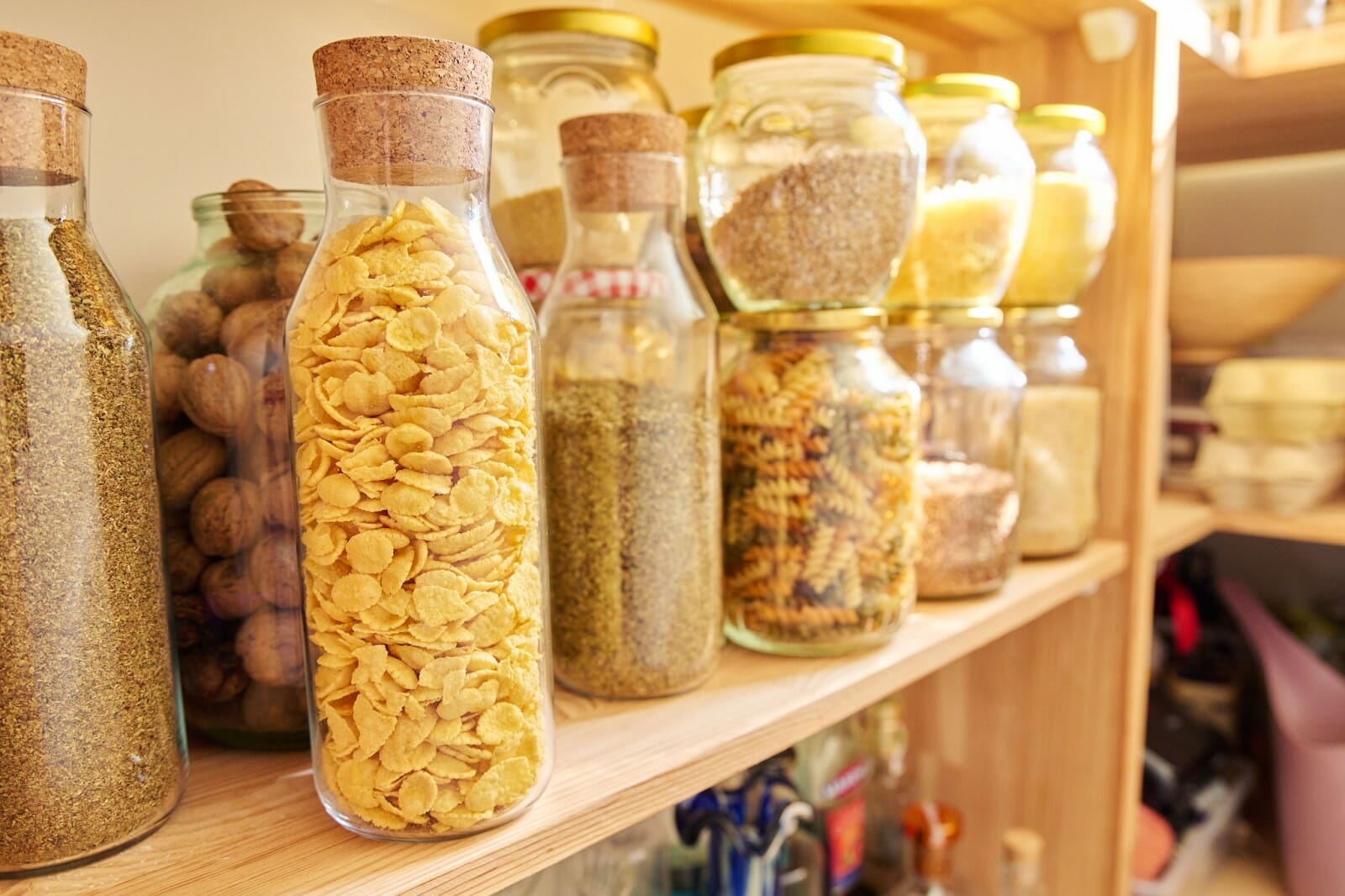
Do you find yourself stocking up on certain foods, even if you can’t finish them before they expire? Are your cupboards filled with ingredients you don’t use?
Do you have stacks of old documents you don’t need anymore? Can you throw them away, or create a filing system for things you don’t have a digital record of?
Do you have items in your closet that still have the price tags attached? Do you find yourself buying and stowing things you don’t intend to use?

Do you have more animals in your home than you can care for? Sometimes people rescue animals out of compassion, but do not have the space or resources to care for all of them. If you struggle caring for your animals, you may want to evaluate your space and consider finding new homes for some of them.
Do you find yourself searching for free items left in others’ trash, or struggling to part with your garbage? Some people struggle to part with trash, whether their own or what they’ve found. However, trash can quickly create dangerous health situations by attracting pests.
Once you’ve identified what you want to change, it’s easy to get carried away with lofty plans. However, if you try to do too much at once, you can get overwhelmed and give up quickly.

Don’t expect to finish everything in one weekend. Remember, it’s a process!
Rather than saying you’ll finish the entire house by a certain date, give yourself smaller deadlines and plenty of space. If you’re not sure how long something will take, set a daily habit goal for yourself. You can set a timer for 5-15 minutes, returning to the same area each day until it’s finished.
Decluttering your home is a marathon, not a sprint! Don’t burn yourself out at the beginning. Keep it small, steady, and consistent.
Sometimes the hardest part of undertaking a big project is getting started! Get the momentum going by deciding what your first step will be.

Make it easier on yourself by picking a spot you can finish quickly. Accumulating some wins will help you feel good about your progress and strengthen your motivation and confidence.
Breaking your goals down into bite-size, achievable increments is a great strategy. Rather than saying “I’ll clean the bathroom first,” focus on decluttering the top drawer.
Once that is finished, pat yourself on the back and move on to the next drawer.

There are numerous decluttering strategies out there. Below, we’ve compiled what we found to be the most effective strategies for your use. Some will work for your personal strengths and needs, and others won’t.
Keep testing the cleaning methods listed below until you find something that resonates with YOU and helps you achieve your goals.
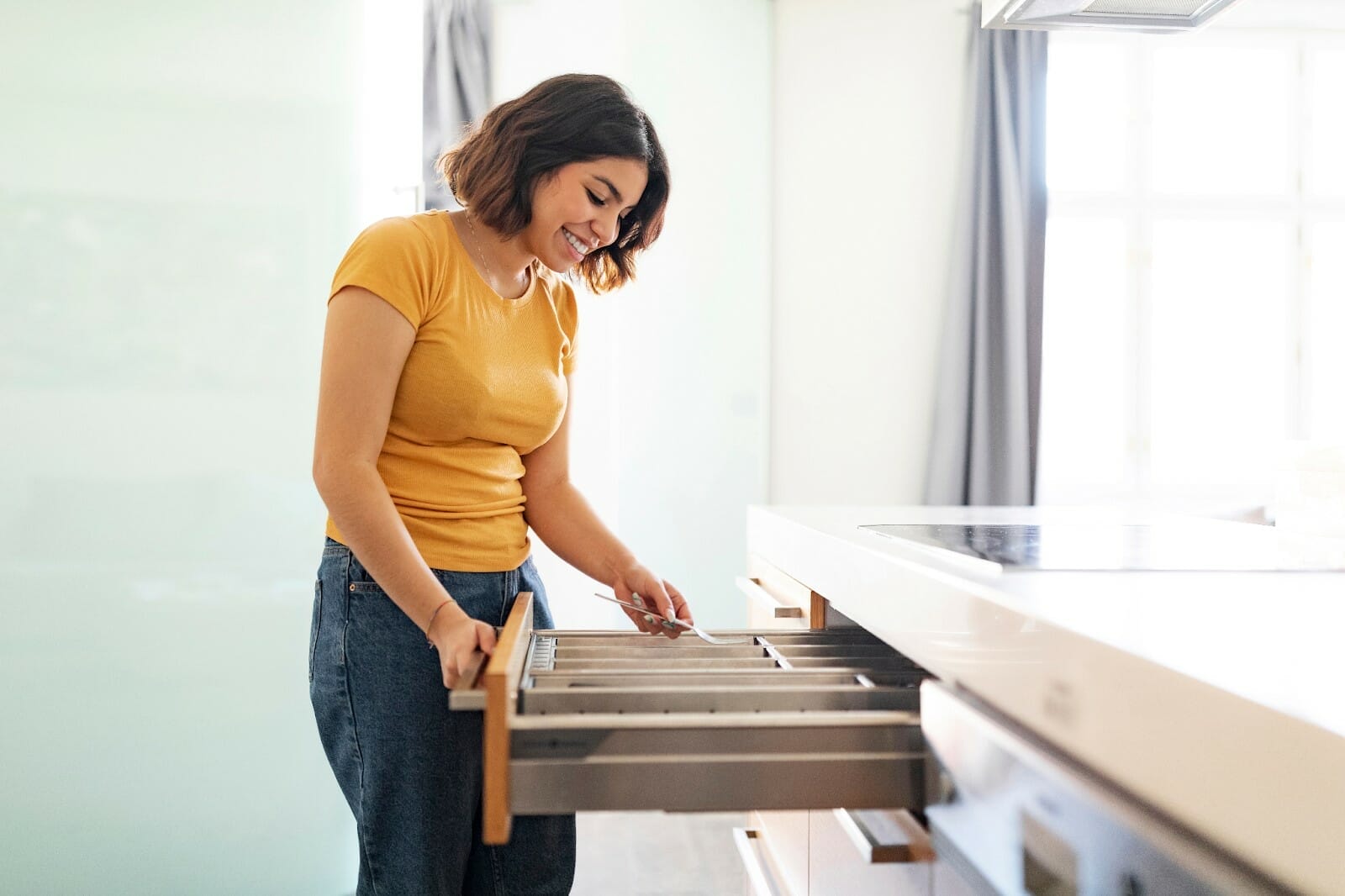
Each day, choose a drawer or other small space in your home and set a time for 5-15 minutes. Work on that space until your timer goes off, and then move on with your day!
Once you’ve finished a space, you can move on to the next area on your list.
The one-drawer-a-day method works especially well for people with ADHD or others who may quickly get distracted.
Sometimes, we hang onto things for years, thinking we’ll need them eventually. With this method, we introduce ways to track if items have been used in the last year. If not, they’re thrown out or donated.

The next time you’re decluttering, ask yourself if you’ve used an item in the last year. If not, get rid of it.
If you’re sorting clothes, it can be helpful to turn all the hangers backward at the beginning of a season. Once you’ve worn something, you can hang it up the regular way.
Once that season is over, look through the closet and remove all the clothes still on backward-facing hangers—these are the pieces you wound up not using.
No matter how useful something is, having too much is unhelpful. If you have extras of something, donate them. Many organizations take extra items, and sometimes these donations are even tax-deductible.
These organizations are all good options to look into when donating extra items:

OHIO stands for Only Handle It Once. This method is particularly useful for mail and email. Don’t let things pile up. When you open your mail, you have three options:
Once you have a digital record of something, you can throw away the paper copy and know that you’ll never lose it.
Kondo’s method of decluttering involves asking yourself if different items “spark joy.” In her bestselling book, The Life-Changing Magic of Tidying Up, Kondo offers a unique process.
She advises going through your homes, touching each item you own, and asking yourself if it sparks joy. Often, she says, we are attached to our emotions and memories surrounding an object, and we don’t need the object itself to enjoy those emotions and memories.

While going through each individual item can feel overwhelming, as you make your way through the different spaces in your home, take an extra minute with the items that feel hard to part with.
Ask yourself if that item truly sparks joy. If you’re keeping it for any other reason (anxiety, guilt, fear), let it go.
One of the main premises of Swedish death cleaning is consideration for your loved ones who will need to deal with your belongings after your passing.
While it may seem morbid, in reality, choosing to downsize can lighten the burden for others in the future. Swedish death cleaning emphasizes taking your time and mindfully evaluating what you still need.
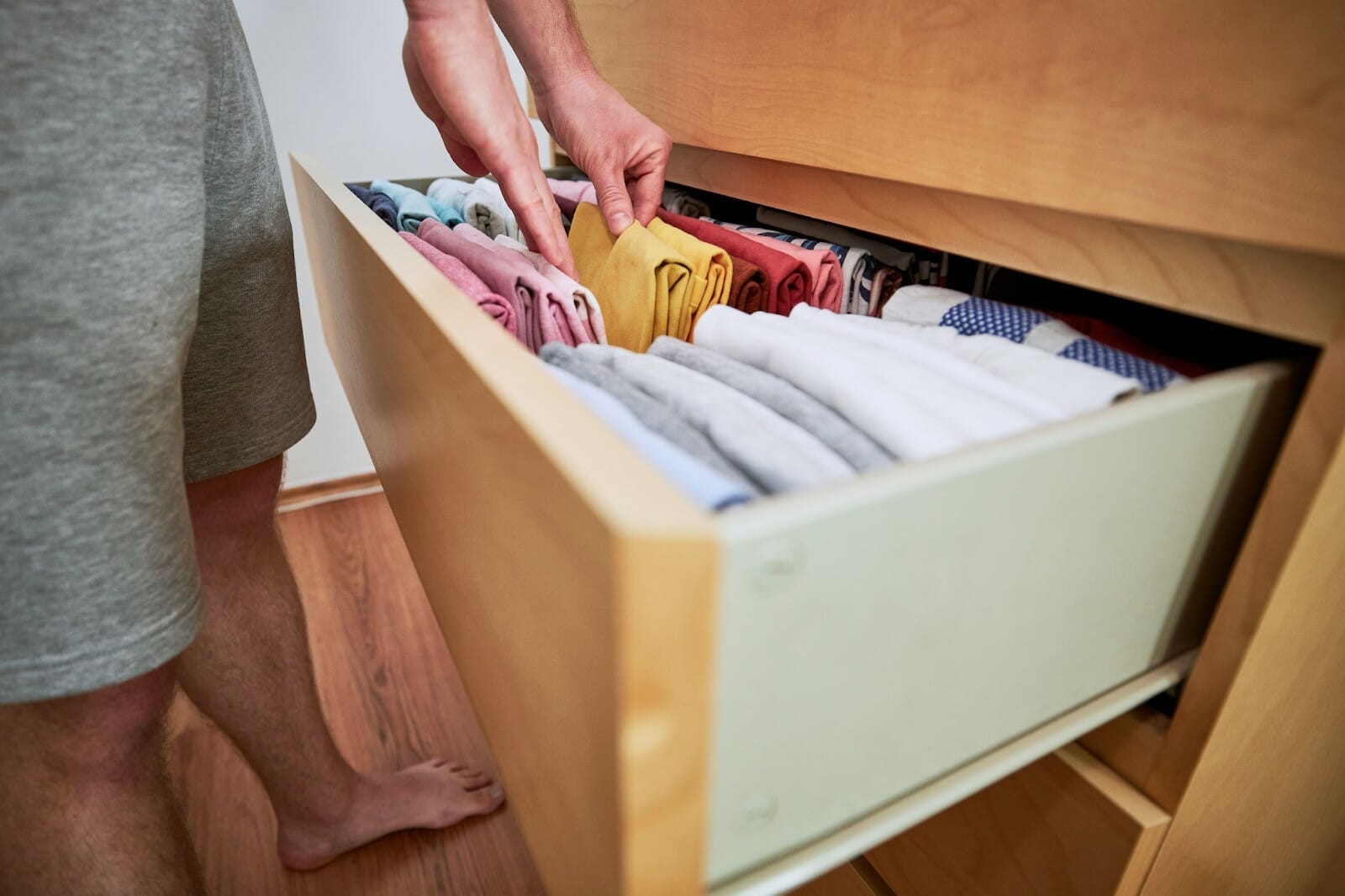
For the 4-box technique, label four different boxes with:
If you’re keeping it, put it in the keep box.
If you don’t need it but it’s still in good shape, put it in the donation box.

If you don’t need it and it isn’t in good condition to donate, put it in the trash box.
If you need it in a certain season, but not this current season (think baby gear if you’re planning on having another child, seasonal decor, winter clothing, etc.), put it in the store box.
With your four boxes, move to the first space you want to declutter and put items in the appropriate box. Once you’re finished with a space, empty the boxes before you move to the next space. Put away the keep items, throw out the trash items, and so on.

For a motivating win to get your sense of accomplishment up, do a quick 21-item toss.
Grab a trash bag and walk through your house, picking up the first 21 things you see that you don’t need anymore and throwing them away. If you make this a habit, you can quickly clear out things you no longer need and make a big difference in your space.
It’s a great excuse to get up from your desk for a few minutes or fill the time during a commercial break. You can enlist your kids or partner to help too—or race to see who can toss 21 items first!
If you’re saving something for a rainy day, put it on a firm deadline. Box up the items you think you’ll need someday and write an expiration date on the outside of the box.
If you haven’t gone looking for the items by that date, simply donate or throw away the box. Put a reminder in your phone or calendar so you don’t leave the box gathering dust in your garage for years.
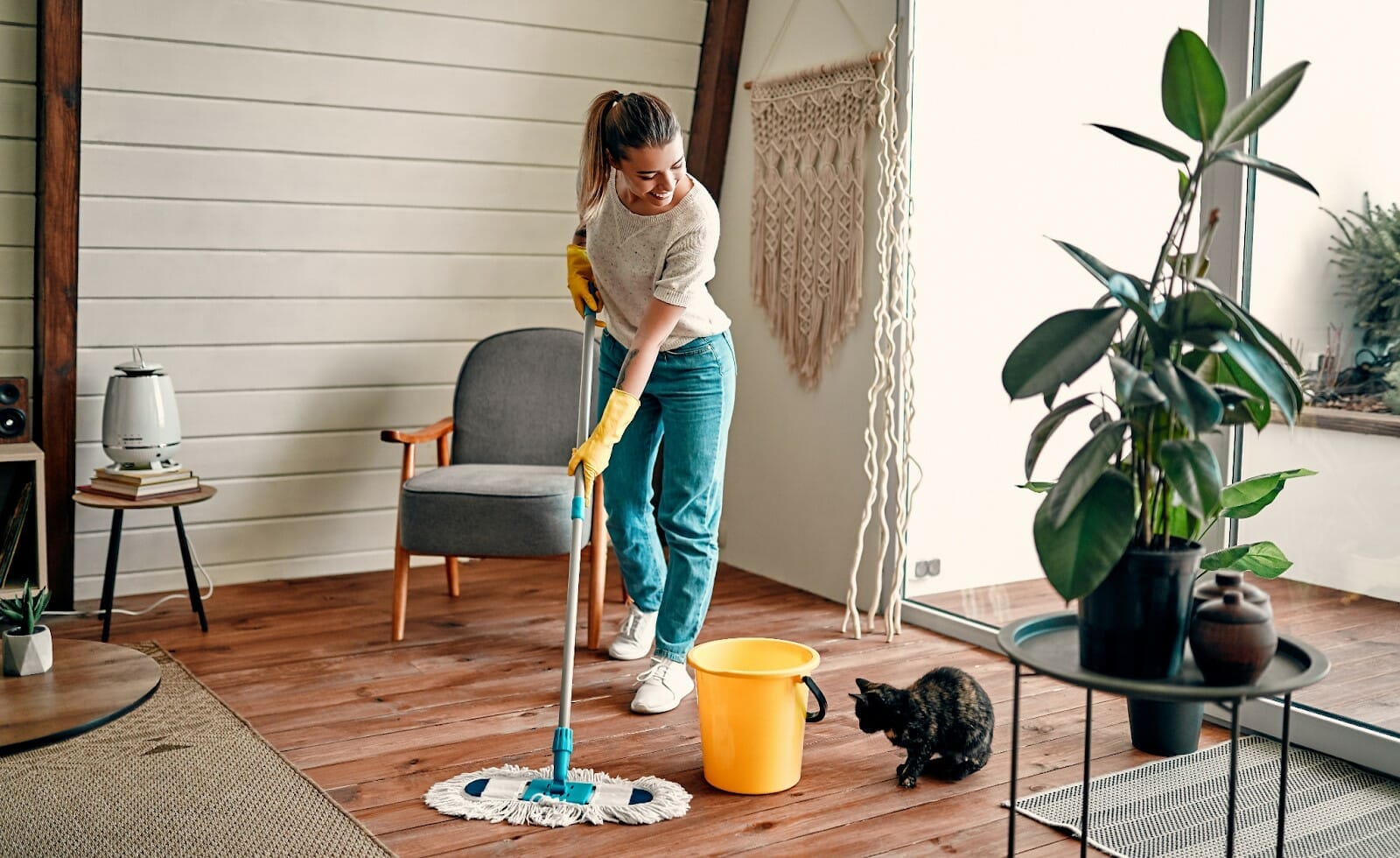
For a week-long challenge, choose 7 manageable areas you want to tackle. Each day for a week, clean one of your zones. Make sure these areas are small so you don’t get overwhelmed—you want to set yourself up to win by picking things that can be accomplished in a day!
Sometimes we need to make a few purchases in order to organize our homes. It makes it even harder to clean things up if you’re dealing with:
Finding a storage bin, new hangers, or another organizer to corral these items can make all the difference. But beware, don’t let shopping for organizational solutions become a new way to clutter up your home.
Recognize that if you are constantly buying new bookshelves or storage bins, it’s probably time to go through your items and get rid of some of them.
Getting rid of things can be a painful process, but understanding your reasons for decluttering increases your motivation. Ask yourself these 12 questions to decide if something deserves a spot in your home:
We want to live in clean spaces. After all, improving the cleanliness of our homes has major physical, mental, emotional, and social benefits.
Trends in organization and home decor ebb and flow, but a certain fascination with decluttering and cleaning stays consistent. The reality is that we all struggle to bridge the gap between our goals and reality—which is why cleaning and organization trends are so pervasive in pop culture.
Celebrities have a heavy influence on our design and cleaning trends. All of the most popular decor trends— Scandi, Japandi, and the Minimalist Movement—are popular because celebrities made them that way.
Even cleaning trends like:
Are considered trends because influencers rave about how effective they are.
At the root of those trends is a deep-seated human obsession with understanding how we can reach our cleaning goals despite all the factors that prevent us from getting there.

At the beginning of the Covid-19 pandemic, most of the United States was under strict shelter-in-place orders. Suddenly, we were asked to conduct work, education, and family life within four walls.
Even now, while many of us have ventured out of our homes for work, school, travel, and entertainment, once again, our lives have shifted.

Members of the workforce may still be working remotely or adopting a hybrid schedule. Many families have decided to continue homeschooling their children.
Spending more time than ever in our homes has given many of us an increased awareness of the spaces where we live. Being home all the time may have created more challenges in keeping things tidy, but it also increased our awareness and appreciation of our homes. You probably have a clearer view into what you’d like to improve about your living space.
If increased time at home has sparked your curiosity about ways to keep it more peaceful, clean, and uncluttered, keep reading to learn more about modern design and organizational movements.
Current decor trends point to a desire for clean, uncluttered spaces. Simple lines, natural colors, and a minimalistic appearance characterize the popular Scandi and Japandi-style interiors.
If you’ve been to an Ikea, you’ve been exposed to Scandi design. Short for “Scandinavian,” this trend originated in the countries of Northern Europe and focuses on combining functionality with beauty. Scandi values:

Scandi evokes warmth and peace without being kitschy or cluttered.
Japandi design combines simple Scandi ideals with Japanese beauty. Japandi emphasizes our relationship with the natural world and sustainability while maintaining the aesthetics that made Scandi so popular. Japandi pieces tend to be sleeker than Scandi’s rustic touches and use deeper color tones.
Both styles are grounded in minimalism and characterized by a lack of clutter, evoking peace, calm, and contentment—something we all crave, especially after spending more time than ever at home.

In recent years, minimalism has become the subject of:
Devotees evangelize the peace they feel about letting go of extra possessions and living a simpler life. Aspiring minimalists can look to dozens of sources for guidance on how to cut down on their stuff and simplify. While minimalism is a popular buzzword right now, its roots go back centuries.
In the 1800s, transcendentalist philosophers like Ralph Waldo Emerson and Henry David
Thoreau wrote about the virtues of simplicity and living with less.
Throughout the 20th century, design movements focusing on simple materials and sleek lines have gone in and out of popularity. Real Simple, a magazine that is a staple in many homes, was started in 2000, and emphasizes “keeping life simple and stress free.”
The longstanding popularity of minimalist movements goes to show that we want to be in peaceful, clean homes—we just don’t always know how to get there.

Because cleaning is a fact of life that occupies our minds daily, it’s natural for trends to mirror this. Certain methods and philosophies are having their heyday right now. Shows, books, and social media factor in the rising popularity of these organizational trends.
Marie Kondo revolutionized decluttering with her “spark joy” method of getting rid of any items
that don’t make you feel happy. She recommends thanking items that have served their purpose before throwing them away or donating them.
Kondo acknowledged in a recent article that with three children, she still struggles to keep her home organized. While her home is no longer pristine and tidy, she still embraces minimalism not only in physical spaces but in how she spends her time.

Margareta Magnusson published her book, The Gentle Art of Swedish Death Cleaning, in early 2018. Despite the initially shocking title, Swedish death cleaning, or döstädning, is a simple and considerate practice.
Swedish death cleaning is based on the idea that as you age, you should begin clearing your home of excess possessions. This helps you simplify your life and focus on what matters as you age. It also helps your loved ones by giving them fewer things to manage after your passing.
The Home Edit is a company founded by Clea Shearer and Joanna Teplin. They have created:
The Home Edit’s main philosophy is combining form, function, and fun for a home that stays neat and organized while keeping personality as a strong feature. They are very influential in the home organization space. Their marketing and personality-infused cleaning tips give them a broad appeal. They appeal to people who want a neater, more organized space but don’t resonate with the severity of more minimalistic approaches.

Organizing trends come and go, but spring cleaning has been a popular seasonal ritual for centuries. Humans have always needed to be intentional about taking time to clean and organize.
The practice has roots in many religious and cultural traditions like:
In Judaism, homes are traditionally cleaned before Passover to remove any yeast products.
A Buddhist festival in Thailand held in April involves purification rituals, including cleaning homes and temples.
Khaneh Tekani, or “shaking the house,” is a Persian tradition dating back over 3,000 years. In the spring, families cleaned and decluttered their homes to prevent bad luck in the coming year.
Yogis practice saucha, a purity practice, in the spring. Part of this practice is creating clean, non-distracting environments for home and work.

There may also be biological reasons for our drive to clean in the spring. As we experience more sunlight, our bodies produce less melatonin, driving us to be more alert. After a long, sleepy winter, the warm weather provides an opportunity to set things in order.
If the thought of gearing up for spring cleaning has your heart pounding, you’re not alone. The extra sunlight and societal pressures create intense feelings around spring cleaning.
Society tells us we should be ashamed when we struggle to keep our homes clean, but in reality, most of us fall somewhere on the hoarding scale. There’s a reason the human race has been doing spring cleaning for thousands of years!

We’re all a work in progress. There’s no need to feel shame no matter how out of hand your home feels to you.
It’s time to end the stigma around hoarding. There’s nothing wrong with asking for help. Whether you simply need some ideas to help you get started or are looking for some hands-on assistance, we’ve got you covered.

Is having a disorganized home such a big deal? Why not let people live how they want to live?
Having a clean, comfortable home affects people in different ways:

Keeping a clean, organized home is well worth all the physical, mental, emotional, and social benefits that come with it.

From sleep quality to infection control, cleanliness affects how well your body functions from day to day.
Here are a few ways keeping an orderly environment can help you physically:
Keeping a clean home reduces the risk of illness-causing pathogens being passed to residents of the home.
Food preparation areas should be sanitary, especially after handling raw meat.
Bathroom areas should be cleaned regularly, and animal waste should be taken care of to prevent disease.
People with cluttered homes are more likely to experience insomnia. It’s hard to know if it stems from increased stress levels, difficulty getting comfortable in a cluttered space, or from another cause, but cleaning up clutter should help you get a better
night’s sleep.
Allergies and asthma attacks can be triggered by dust, pet hair and dander, and mold. Keeping homes free of these triggers can improve allergy and asthma symptoms.

The state of your home can have profound effects on your mental state. A cluttered, disorganized space can stress and overwhelm us. Severely cluttered homes can also cause feelings of shame and anxiety. Here are a few ways keeping your home in order can help you function well mentally:
A clean, uncluttered space helps our minds stay on task without distraction. When we see more items in our line of sight, it can actually slow down our brain’s processing speed and make it more difficult to focus.
When we constantly look around us and see work that needs to be done, it’s difficult to feel calm. How can we relax when we’re surrounded by chaos? Maintaining a clean, organized space will create tranquility and peace-of-mind.
Setting your home in order can be empowering! When you are able to make your space look and feel the way you want it to be, you feel a sense of accomplishment.
When your home is constantly in good condition, you can depend on it as a place to relax and feel at peace. Regardless of what happens outside your home, you have a refuge where you can retreat from the world.
Creativity needs margin and blank space to grow. When your space is not distracting from your thought process, your brain can focus on new ideas.

Just as tasks requiring deep thought can be difficult when our homes are chaotic, our emotions can also be hard to settle when our environment is in upheaval. Here are some emotional benefits to improving the cleanliness of your home:
When you’re in a clean, comfortable environment, you feel better emotionally. Many studies show a relationship between messy homes and unhappiness.
Not only does being in a clean, restful environment contribute to being better able to focus and be mindful, the act of cleaning itself actually offers an opportunity to practice mindfulness. Being mindful of the task at hand can decrease feelings of anxiety and increase feelings of inspiration.
Emotional regulation is the ability to respond to your emotions mindfully. This skill can help you reframe negative emotions and cope with stress. When your home is less cluttered, you are better able to attend to your emotions and find peace.

Your home doesn’t only affect you—it also has an effect on the people around you. When your home is messy and disorganized, it can actually hinder your relationships. Here are some ways cleaning and organizing can benefit you socially:
Cleaning up can create a welcoming space for you to spend time with those you care about. When your home is messy and disorganized, it can be difficult, or even embarrassing, to host others.
You may feel embarrassed about the state of your home, or your friends may not be comfortable there due to cleanliness issues, a lack of seating due to spaces being taken up by clutter, and so on.
When your home is clean and uncluttered, there is space for family to come and stay. Even if you need to set up cots or sleeping bags to accommodate extra guests, they can still be comfortable with you. With a clean floor and stored belongings, this can become a reality.
In severe cases, disorganization and lack of cleanliness can lead to structural issues with your home. Appliances may fall into disrepair and become hazardous, or the home’s structure can even be compromised by the weight of your belongings.
When your things are in order, there is no danger of needing to relocate. However, when your things are in order, there is no danger of being forced to relocate. That stress is non-existent. At a certain point, a health inspector could become involved.

Everyone can improve the state of their homes—we all struggle to keep things clean and hang on to only the possessions we really need.
However, when we take the necessary steps to tidy up and declutter, we can see benefits in many different areas of our lives: physically, mentally, emotionally, and socially.

Suicide is often reduced to statistics to give people a general sense of the scale of the problem. But statistics can’t possibly illustrate the toll of each individual loss.
If you have lost a loved one to suicide, you are intimately familiar with the devastating and complex impact felt by surviving friends and family.
Your loved one’s death may have left you feeling lost and confused, unsure of where to turn for answers. As you and those around you struggle to come to terms with the loss, it can be difficult to know what to do or how to feel.
There is no right answer for how you should be feeling following the suicide of someone close to you. Grief is complex, and it’s rare that any two people will experience it in the same way. Just know that whatever you’re feeling, it’s okay.
Accepting your grief and allowing yourself to feel it is easier said than done, but there are things that can help. Here are a few things that may help in your grieving process.

The most common question that survivors of suicide come to is “Why did this happen?”
After a loved one’s suicide it can be easy in your search for answers to begin blaming yourself.
You may wonder what you could have done to prevent this outcome or you might feel guilt over signs you may have missed. You may find yourself wondering why your support wasn’t enough to keep them around.
The truth of the matter is that suicide is complicated with no singular explanation for why it happens. However, a framing that may help you understand is this: At the end of all things, your loved one died of an illness.
Most, if not all, victims of suicide suffer from an acute mental illness that contributed to the decision to end their life.
Mental illness can severely distort a person’s perception of their importance in the world and the care of those around them. Your loved one did not choose to become ill, and they would not have chosen to end their life had their illness not been pushing them to do so.
Mental illness is treatable just as cancer is treatable—but some people still succumb to their cancer even with treatment, while others recover and go on to live for years.
You do not need to wonder why your efforts weren’t enough or what you could have done better. In the end, succumbing to their illness requires no more blame than if they had died from a heart attack.
Understanding this will not make the loss hurt any less, but it may help to reconcile some of the confusion so you can grieve more peacefully.

There is no timetable on grief, so it’s impossible to say how long it will take for your life to begin to feel normal again.
There are, however, some things you can do to aid in your recovery process and ensure you are on the best possible path toward healing:
At the heart of all of these is connection with other people. You are not required or expected to do this alone. While you may occasionally need some time to yourself to process, it is support and connection with others that will be the most help in getting you through this difficult time.

After a traumatic loss, the idea of moving on can be scary. If you’re struggling with the transition, volunteering your time to a cause dedicated to preventing suicide and supporting survivors like you can help to ease some of the guilt and fear.
There may still be bumpy roads ahead. Grief is complicated and can come in waves. However, as you start feeling a little more whole you will be able to give yourself permission to begin living again.

There are varied reasons people hang on to things they don’t need based on their circumstances or deeper-lying struggles. A cluttered home—even one that would qualify as a Level 5 situation—doesn’t stem from laziness or lack of willpower.
More often than not, a cluttered home is the result of a difficult-to-control situation, which is part of normal life.
What’s the source of your clutter? Following, are a few factors that may be contributing to your at-home clutter:

Having children can bring an abundance of joy, but also plenty of clutter.
Baby gear that is only used for a short period of time, rapidly changing clothes sizes, and piles of toys accumulate quickly.
It doesn’t end with the baby phase, though. As all guardians know, older kids and teens bring their own messes into the home.
Food-related messes combined with sleep deprivation can make it difficult to keep up with housework.
With children leaving clutter everywhere and food-related messes needing immediate care, it can be difficult to keep up with housework. Especially when you consider the sleep deprivation that also comes with kids.
Between art and science projects on the counter and smelly gym bags and laundry
left around the house, things can get (or stay!) messy.
It doesn’t help that children aren’t well-known for cleaning up after themselves!

As adults age, they may struggle to keep up with their housework.
Think of all the reaching and bending over. Consider all the hard scrubbing. With health issues, simple cleaning tasks take much longer to accomplish, if it can still be done.
Decreased mobility and increased health issues can make cleaning overwhelming or even impossible.
In addition, it can be difficult to let go of possessions accumulated over a lifetime.
Anxiety can make it difficult to throw away possessions.
People with anxiety may hold on to items in excess in case of a feared emergency or indecision about what to do with items.
Finding the motivation to clean and declutter is often a struggle for someone suffering from depression.
The stress of an out-of-control home situation (whether it’s actually out of control
or simply perceived to be) can create a negative feedback loop.
For example, maybe you’re struggling with depression and lack the motivation to do the dishes. This means the dishes quickly pile up and within a week or two every surface in your kitchen could be covered in dirty dishes.
Now, you’re facing an overwhelming mess that can make you feel even worse—piling on exhaustion, guilt, and shame—and making you even less likely to find the motivation to clean up.
This cycle can leave those struggling with depression feeling more overwhelmed and less able to approach their home situation.
Individuals with ADHD often have intense, passionate interests and may accumulate items related to that interest. In addition, it can be difficult for a person with ADHD to create and stay focused on a plan for a big cleaning project. Anytime there are multiple steps involved, it’s easy for people with ADHD to get distracted.
Obsessive-compulsive disorder is characterized by obsessive, intrusive thoughts and compulsive behaviors. People with OCD sometimes deal with anxieties and emergencies by compulsively buying items. They may have obsessions about running out of essential items or a buying ritual that is difficult to break out of.

Trauma can be a trigger for accumulating clutter. If someone grew up without:
They may feel driven to hold onto things rather than throw them away when they are no longer needed. Research shows that childhood emotional abuse and physical neglect in particular predict higher levels of hoarding symptoms.
People who have experienced loss may also accumulate possessions to soothe the ache of missing their loved one. Buying new things triggers a brief dopamine high, bringing temporary emotional relief.

If you grew up in a home where clutter was common, you are more likely to show these behaviors yourself. You may have a genetic disposition toward it through related diagnoses like anxiety or depression. You may also be more used to an environment where clutter, mess, and even the higher levels of hoarding are the norm.

No matter the reason clutter starts, it’s normal to feel overwhelmed and stressed by the situation. Home maintenance is a big task under any conditions. Certain factors can make the situation feel impossible such as:
Stress can lead to disorganized homes, and disorganized homes can increase stress. Natalie Christine Dattilo, PhD, clinical health psychologist and instructor of psychiatry at Harvard Medical School, calls it a chicken-or-egg dilemma.

“Recent studies have shown that clutter in our homes is associated with higher cortisol levels [our stress hormone], but it’s still unclear which comes first,” says Dattilo.
“Is it that when we are under stress, our ability to maintain a well-organized home becomes impaired? Or when our home is in disarray, does that make us feel more stressed, overwhelmed, and anxious?”
Regardless of the root of the issue, there is a way out. Resources are available to help you deal with your home situation. Bio-One can help! Our services can help ease your stress. For more information on how we can help you with your clutter call (303) 946-8834.
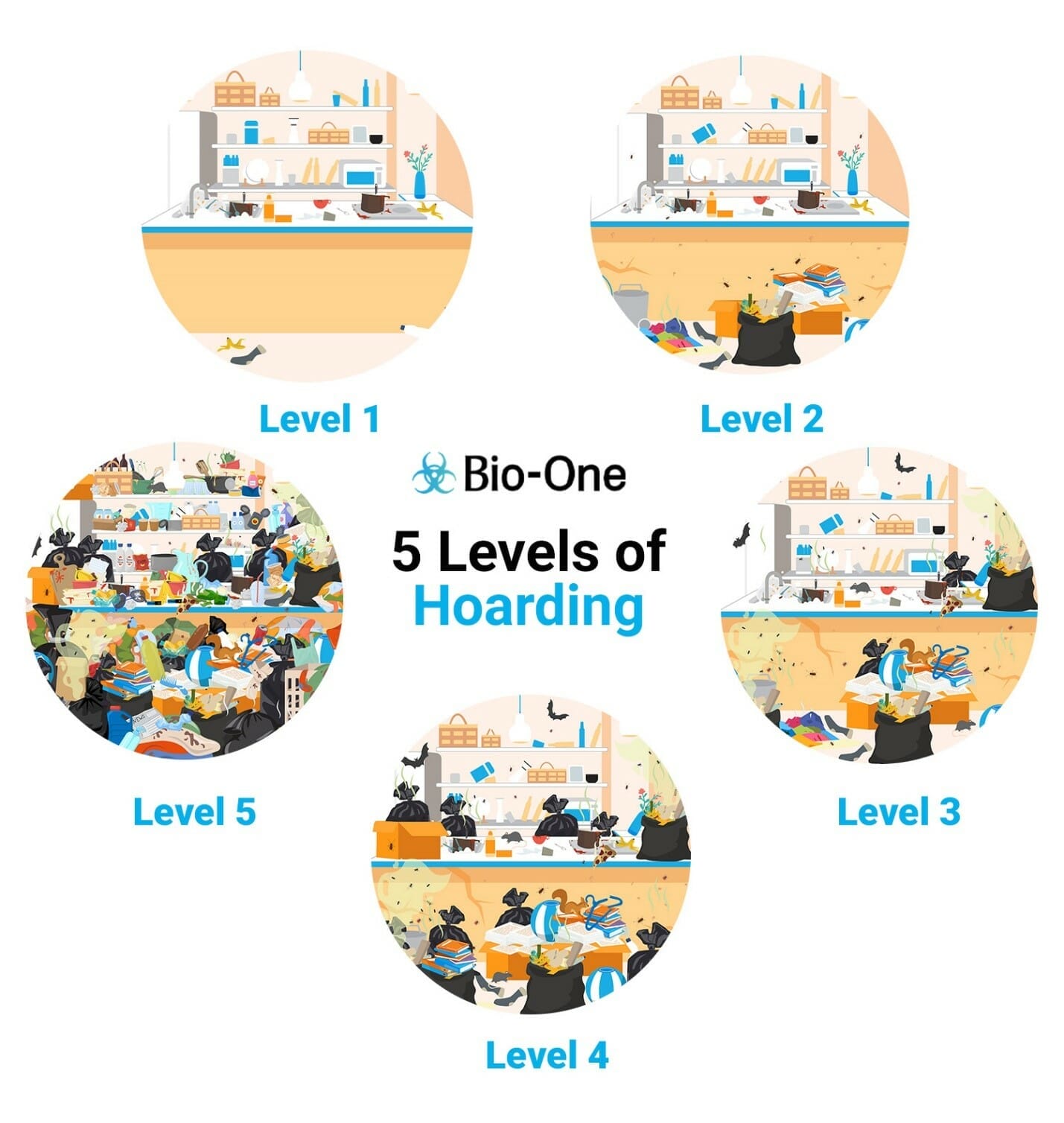
The word “hoarding” probably evokes a particular image, made more common by shows like Hoarders that highlight extreme examples. In reality, not all hoarders have rooms full of items piled high to the ceiling.
The Institute for Challenging Disorganization (now, there’s a relatable title!) has classified hoarding behavior into five levels on their Clutter-Hoarding Scale.Level 1 Hoarding
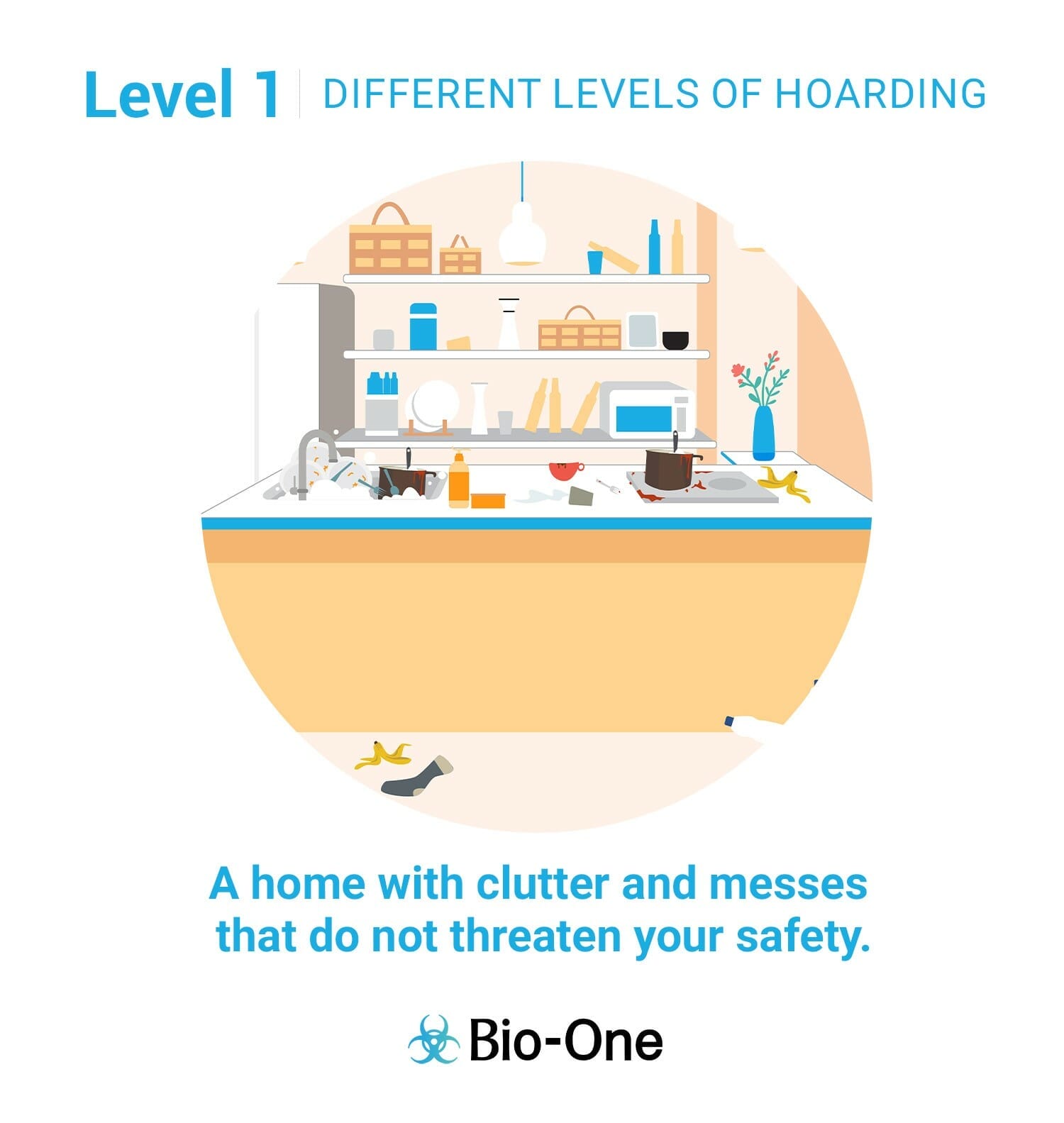
At Level 1, a home is not pristine, but the space is still easily accessible and sanitary. There is clutter, but no concern for safety. Most, if not all of us, have been in Level 1. Many people spend most of their time in this stage.
Here are the defining characteristics of this level:
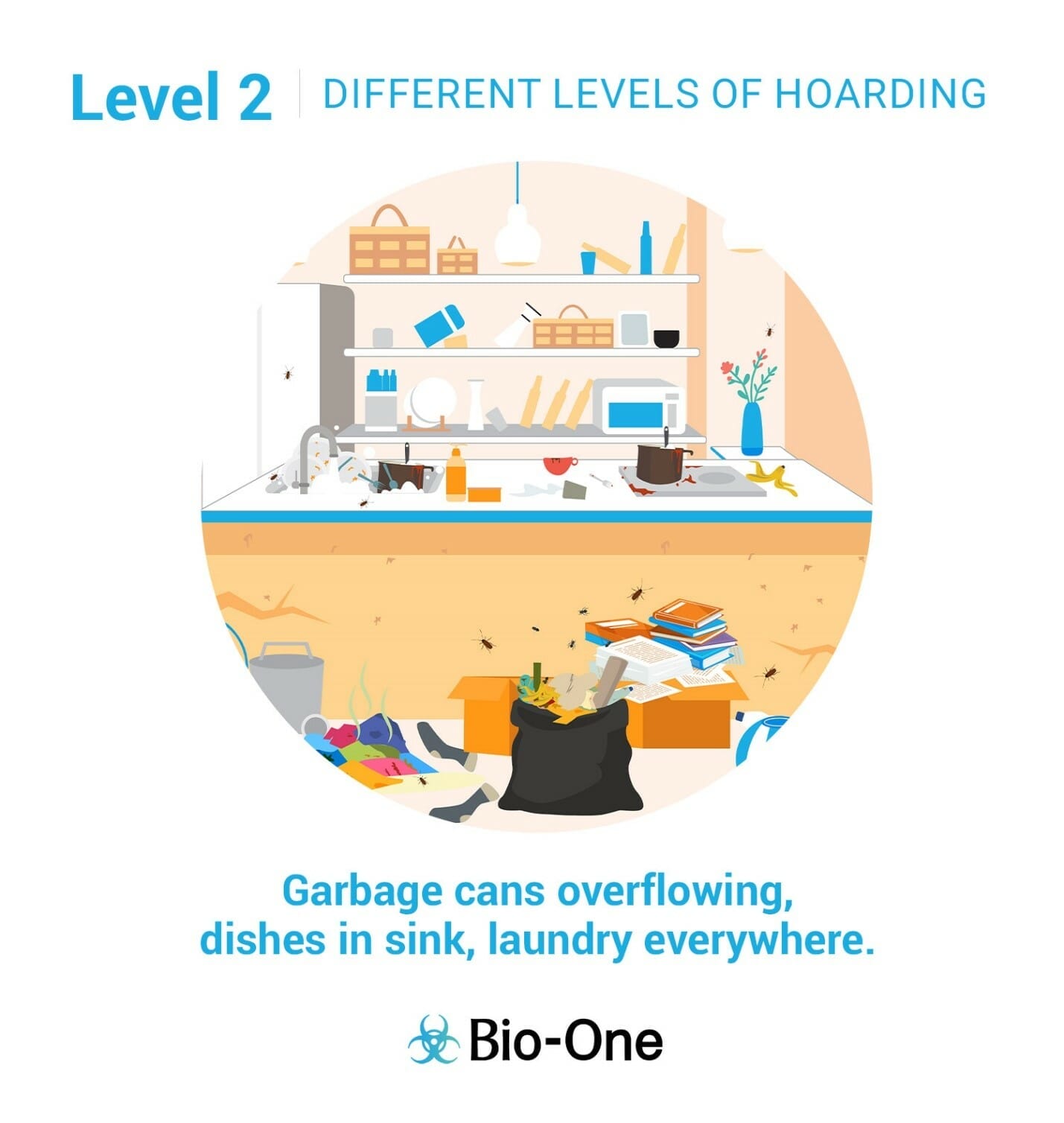
At Level 2, the home is still very livable, but there’s more evidence of disarray. The home is in need of cleaning and may be starting to overwhelm the residents. The hygiene level isn’t optimal.
Most of us bounce between Level 1 and Level 2. However, here are the more defining characteristics of Level 2:

Level 3 is considered the turning point between manageable household disorganization and a more serious issue. Level 3 homes show extreme disorganization and indicate hoarding behavior.
Here are the defining characteristics of this level:
Level 3 households should consider hiring outside help. Although, it’s still possible to get it under control with a concerted effort from the whole family
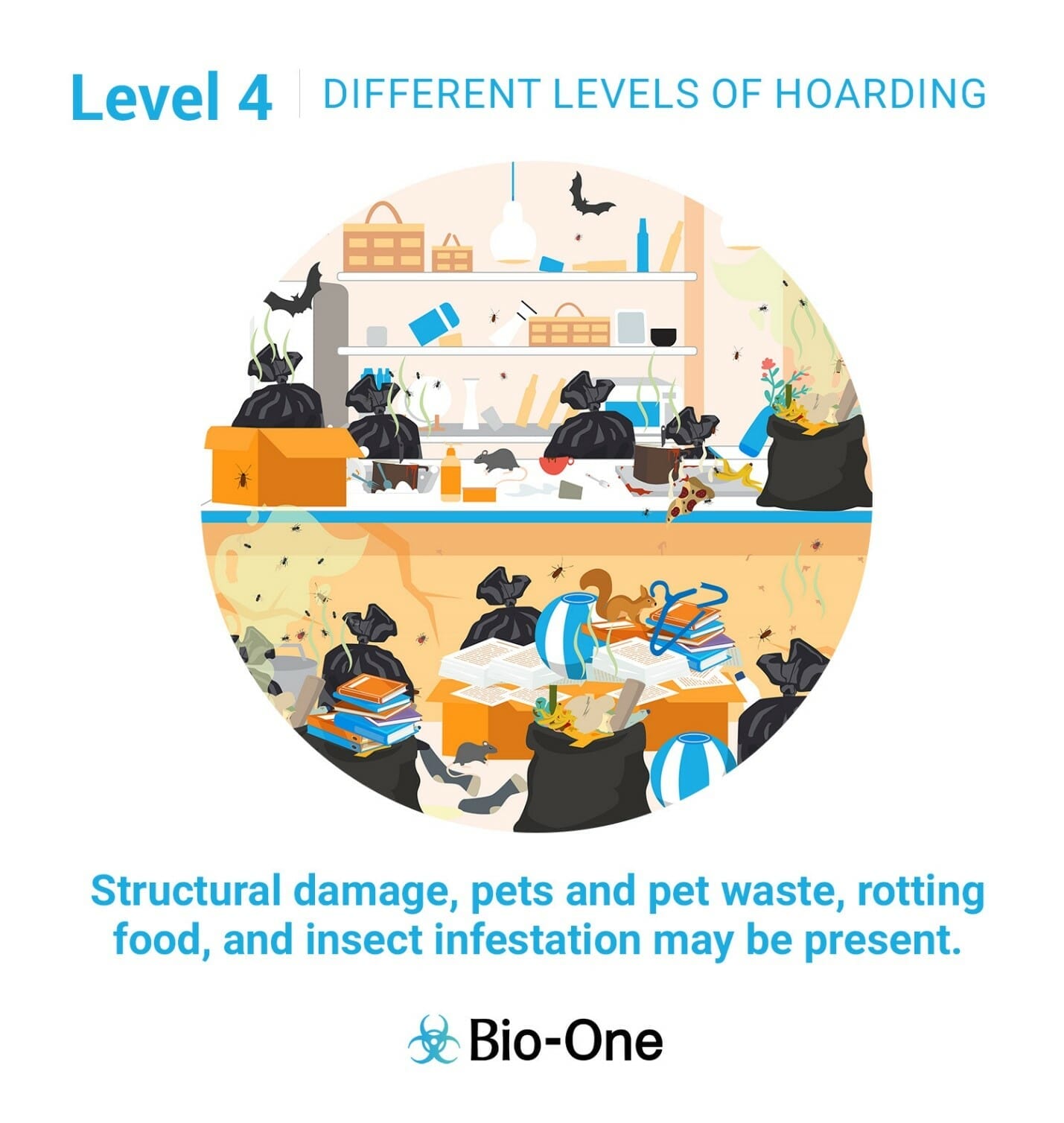
At Level 4, the home shows excessive clutter.Those living in Level 4 conditions need professional help. At this level, part of getting help includes professional cleaning to transform the house into a safe, hygienic space where people can thrive. Mental health counselors and social workers may also step in to help residents change their habits.
Here are the defining characteristics of this level:
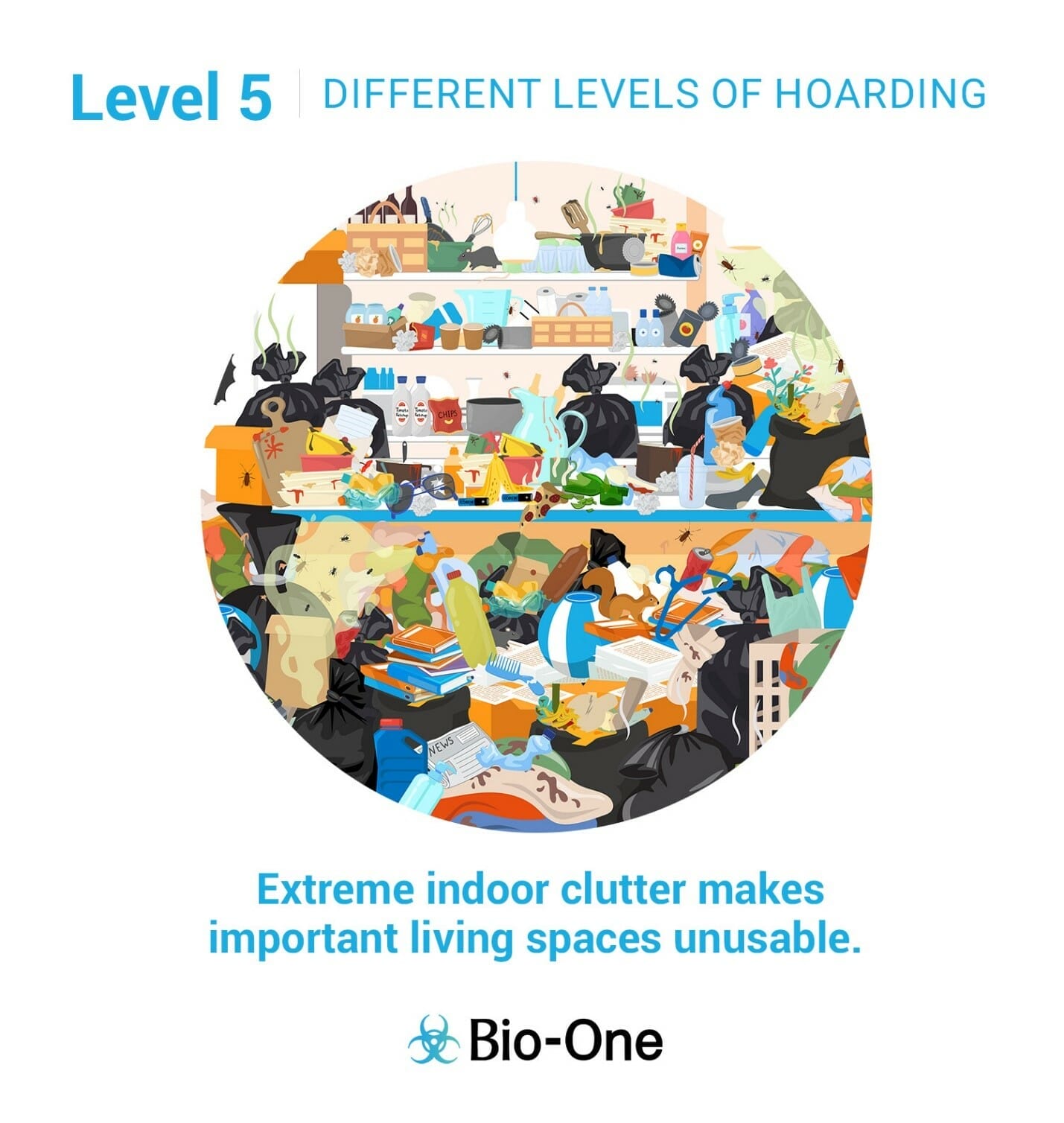
Level 5 is the highest level of hoarding behavior. Level 5 homes are alarmingly hazardous.
They require professionals with safety equipment and training to clean.
Here are the defining characteristics of this level:
If you or someone you know is struggling with these levels of hoarding we are here to help.
You can find more information at https://biooneden.com/ or contact us at (303) 946-8834

Suicide is a difficult topic most people prefer to avoid altogether. Our societal aversion to the topic means most people don’t know what they need to do if the unthinkable happens.
Unfortunately, in spite of the best efforts of many, suicide happens. This leaves surviving loved ones to navigate a confusing and difficult healing and cleanup process.
Many resources offering help following suicide launch right into how to cope with grief. But if you are still in the phase of trying to manage the logistics, you may be looking for different information.
As a biohazard cleanup company, our work at Bio-One often involves families coping with the loss of a loved one to suicide. Because of this, we strive to do our part to help by providing some helpful information for navigating this difficult time.

If you are here because you need information, it’s likely you’ve already contacted emergency services about the death. After the police, coroner, and/or medical examiner have released the scene and your loved one’s body has been transported to a medical facility there are a few things that need to happen next:
Suicide cleanup is a job that should be entrusted to professionals. If you are currently in the position of needing to arrange for cleanup, please contact Bio-One right away at 303-625-6543.
We have all the equipment and expertise needed for the job, and we will treat the scene, the situation, and any belongings with respect and care. We will also help you to get the insurance process underway to get cleaning costs covered by your homeowner’s insurance. Through this difficult and traumatic time, this is the last thing you should have on your plate. We are here to help.
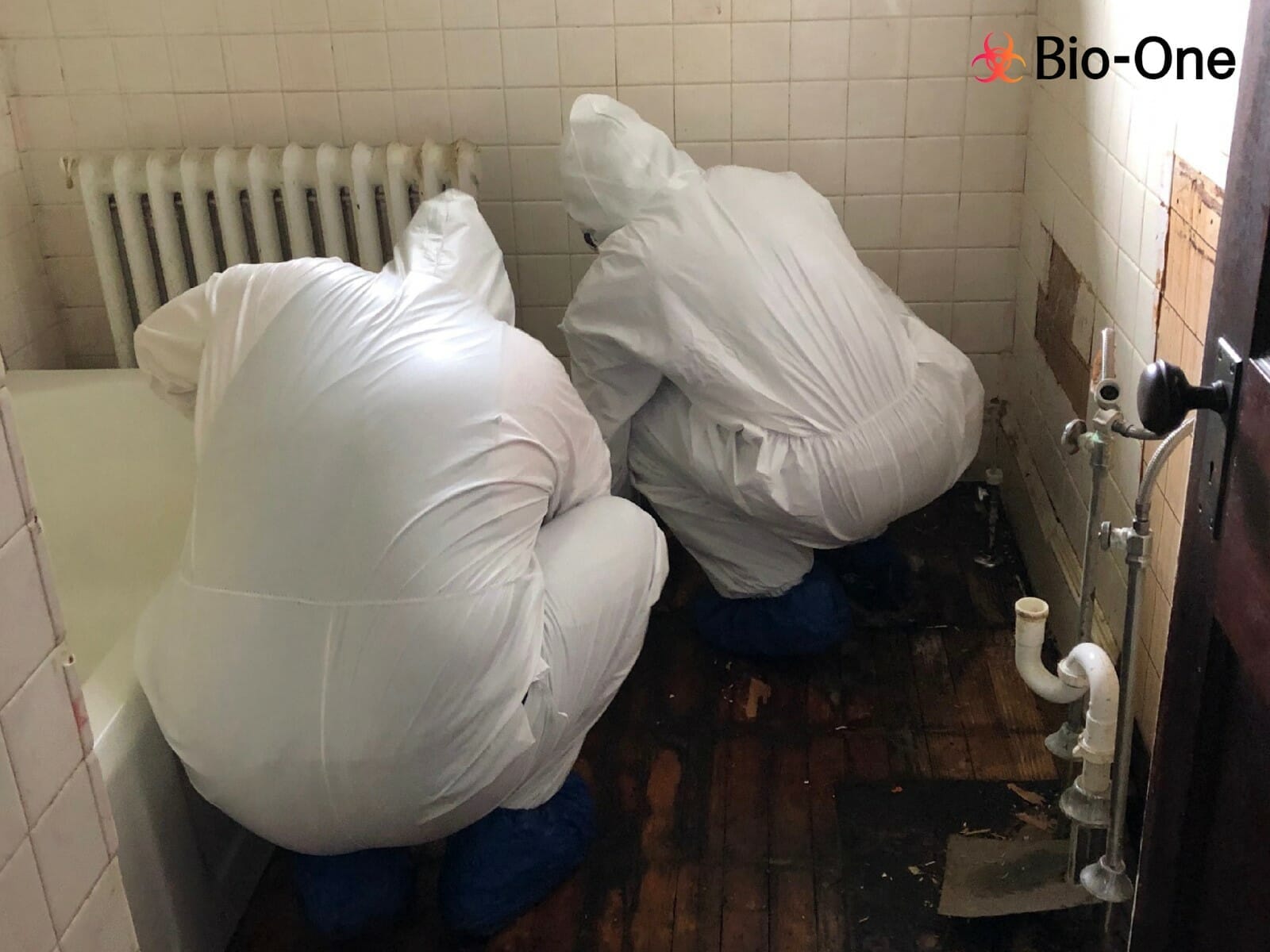
Even though you are not participating in the cleaning itself, understanding what’s involved can be an important part of the grieving process. Some people may need to know exactly what is involved in cleaning up the scene.
The time required for a clean-up and the extent of what’s required can vary depending on how much bio-matter is left at the scene and how long the body was there. Bio-One has a tried-and-true process to restore the scene to a safe and habitable state in a way that is both thorough and respectful.
Our process is as follows:
We hope these details will help to take some weight off your mind during this difficult time so you can focus on any preparations you need to make.
With cleaning out of the way, your remaining responsibilities may focus on informing family and friends and/or making funeral arrangements. Be sure to take care of your own mental health as you take the next steps. You are going through something very painful, but hopefully the help from your family, friends, loved ones, and community will ease some of the stress.

Bio-One is here for you as you weather this tragic time. We hope our service will help ease your burden. Though the circumstances may be difficult, we are honored to be a part of your community at this incredibly challenging time.

One of the most difficult parts about realizing you may be suicidal is feeling like you can’t talk to anyone about it.
Whether out of shame, or fear of how a loved one will react to finding out, reaching out to someone you know for help can be incredibly paralyzing. This sense of isolation can be dangerous, especially in moments of crisis.
In these discouraging and frightening moments, the 988 Suicide & Crisis Lifeline is there.
The 988 Suicide & Crisis Lifeline is a free resource anyone experiencing a crisis can contact for help.

The Lifeline connects people with skilled crisis counselors who listen and provide immediate support to guide you through the worst of your distress. They can also refer you to resources to help you keep yourself safe in the long term.
The Lifeline is funded by the Substance Abuse and Mental Health Services Administration (SAMHSA) as part of its ongoing mission to reduce suicide rates nationwide.
They work with many local and government suicide prevention organizations to extend their reach everywhere in the United States.
Contacting the Lifeline is as simple as calling or texting 988.
The 988 Lifeline is for anyone who is thinking about suicide, concerned for a friend or loved one, or just in need of emotional support. This means you can call, text, or chat even if you are struggling but not yet in crisis.

People call the Lifeline for any number of reasons:
These are just a few concerns that may prompt someone to call, but they should illustrate that you don’t need to wait until you’re in severe distress to call.
988 is a crisis service, but not an emergency service. This means if you are in emotional distress but aren’t yet in danger, it is the right time to call. 988 counselors are well-trained in methods to help you steer out of an emotional spiral and ground yourself.
If you or the person you are helping is in immediate danger of harming themselves, call 911 right away.
There are a few different ways you can contact the 988 Lifeline depending on your needs. You can call or send a text to 988, or you can chat with a counselor online at 988lifeline.org. Help is available in English or Spanish, and there are additional options for ASL speakers.

Depending on how you choose to contact the Lifeline, here is what you can expect from the process:
If you call…
You will be greeted by an automated message and a phone tree. If you are a veteran, you can press 1 to be directed to the Veteran Crisis Line. For help in Spanish, you can press 2. Otherwise, you can remain on the line and you will be placed on a brief hold while you are connected to a counselor.
If you text…
After you send a text to 988 requesting help, you will receive a short survey to let the counselor know a little about your situation. After you respond, the text line will connect you to your counselor who will instruct you further.
If you chat…
Similar to the text line, you will receive a short survey asking about your situation so your counselor knows how to help. There will be a short wait time while you are connected, and then your counselor will instruct you further.
Regardless of how you reach out, once you are connected to a counselor, they will listen to your problems and ask you questions to figure out the best way to help you. If needed, they may offer you steps to help you interrupt a panic attack or work your way out of a thought spiral.

Counselors may also walk you through some steps to keep yourself safe until the crisis has passed. Once they have seen to your immediate needs, they may direct you to resources online or in your community to help you find ongoing care for your mental health concerns.
The 988 Lifeline is always free and always confidential, so you never need to worry about reaching out.
Suicide is on the rise and is one of the leading causes of death in our country, but it can be prevented. The 988 Lifeline is making huge strides in prevention efforts by providing people a place to turn when they feel hopeless.

Studies have shown that almost 98% of people who contact the 988 Lifeline are able to work through their crisis without needing emergency services. Having somebody to talk to can make all the difference.
—
Whether it’s yourself or a loved one, a suicidal crisis can be a scary thing to navigate. That’s why we at Bio-One hope this guide will help you know how to intervene to keep yourself or the people you love safe.
Part of our mission is to provide community resources. That’s why we dedicate so much of our time to projects like this. We want to create a future where we never have to answer another suicide call again.
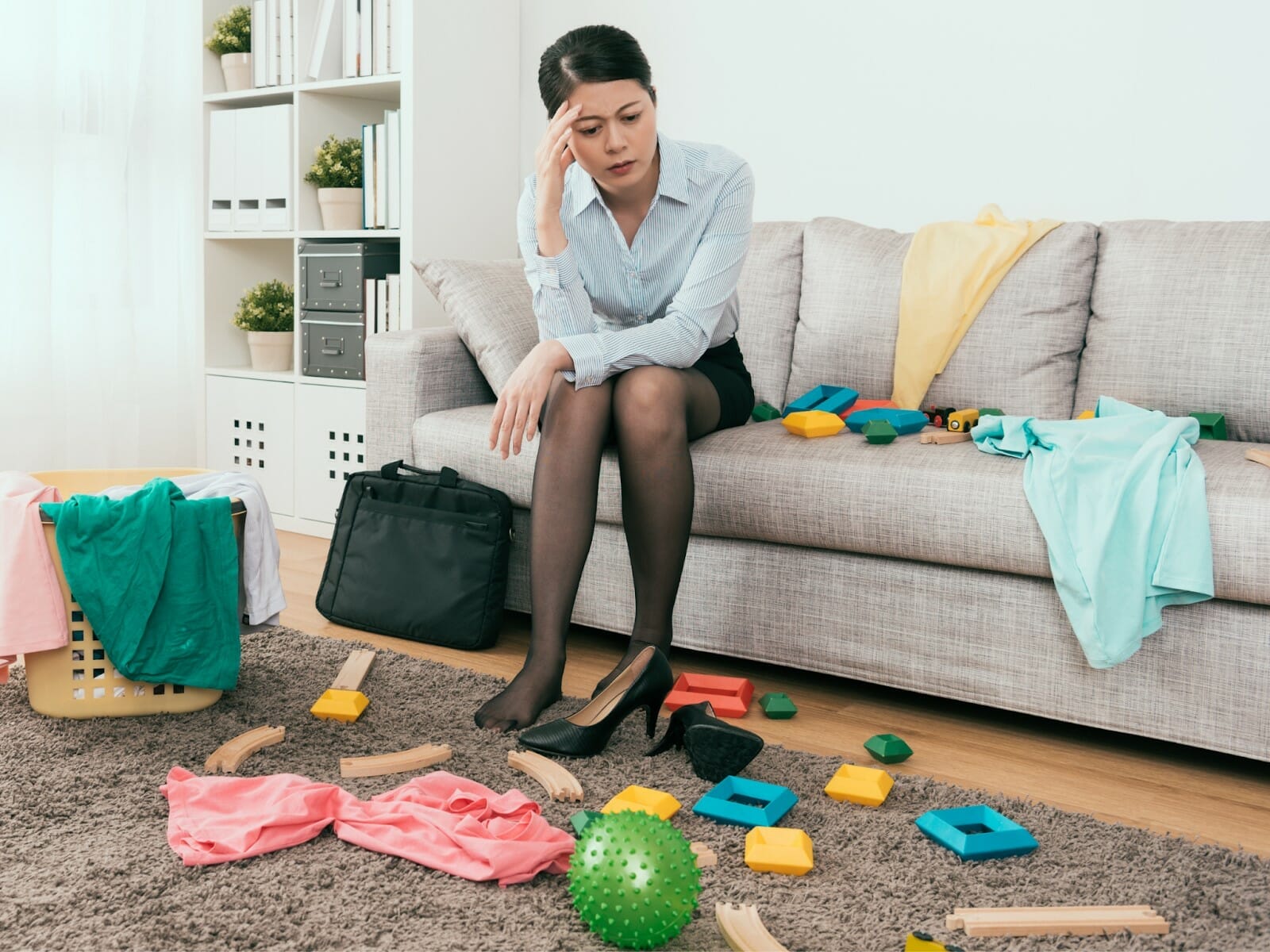
What is stopping you from getting the clutter in your home under control? It might be that you’re overwhelmed—and that’s okay. Maintaining and cleaning a home is a huge task. When you’re trying to do it by yourself amid many other responsibilities, you might not be able to do it all.
Fortunately, you don’t have to do it yourself. There are many support systems out there to help you manage your home. If you’re feeling overwhelmed, you can reach out for help.

Family members are often the first ones to step in when you need extra hands. If you live with a partner, children, or other family members, they should already be taking on a share of the housework as appropriate to their age and health status.
Friends and other family members are also often willing to lend a hand to help with a limited-scope cleaning project, such as:
If you find yourself facing any of these, you could ask a loved one for help.
Sometimes, you might need more help with your house than your friends and/or family are able to give—and it’s important to realize that’s completely okay! There are many different types of people who can help you get your house under control when it gets overwhelming.

If your schedule makes it difficult to stay on top of cleaning tasks, hiring a house cleaner can take some of the burden off your shoulders. You can hire them to come on a set schedule, like weekly or monthly, or schedule a cleaning every now and then when you need extra help—or even just bring them in for a deep clean spring cleaning to get your home back on track.
An excellent way to start when you’re looking to hire someone to come help is by asking around to friends and neighbors. Who do they use and recommend? Another good source is neighborhood mailers like Valpak that include coupons for local services.
However, no matter who you hire, it’s important to understand that house cleaners typically do not pick-up, declutter, or organize homes. Rather they clean:
Whether you hire someone to clean the entire house or ask them to focus on key areas, like the bathrooms or kitchen, you may need to pick up clutter before they come over. This makes it easy for them to access the surfaces that need to be cleaned.
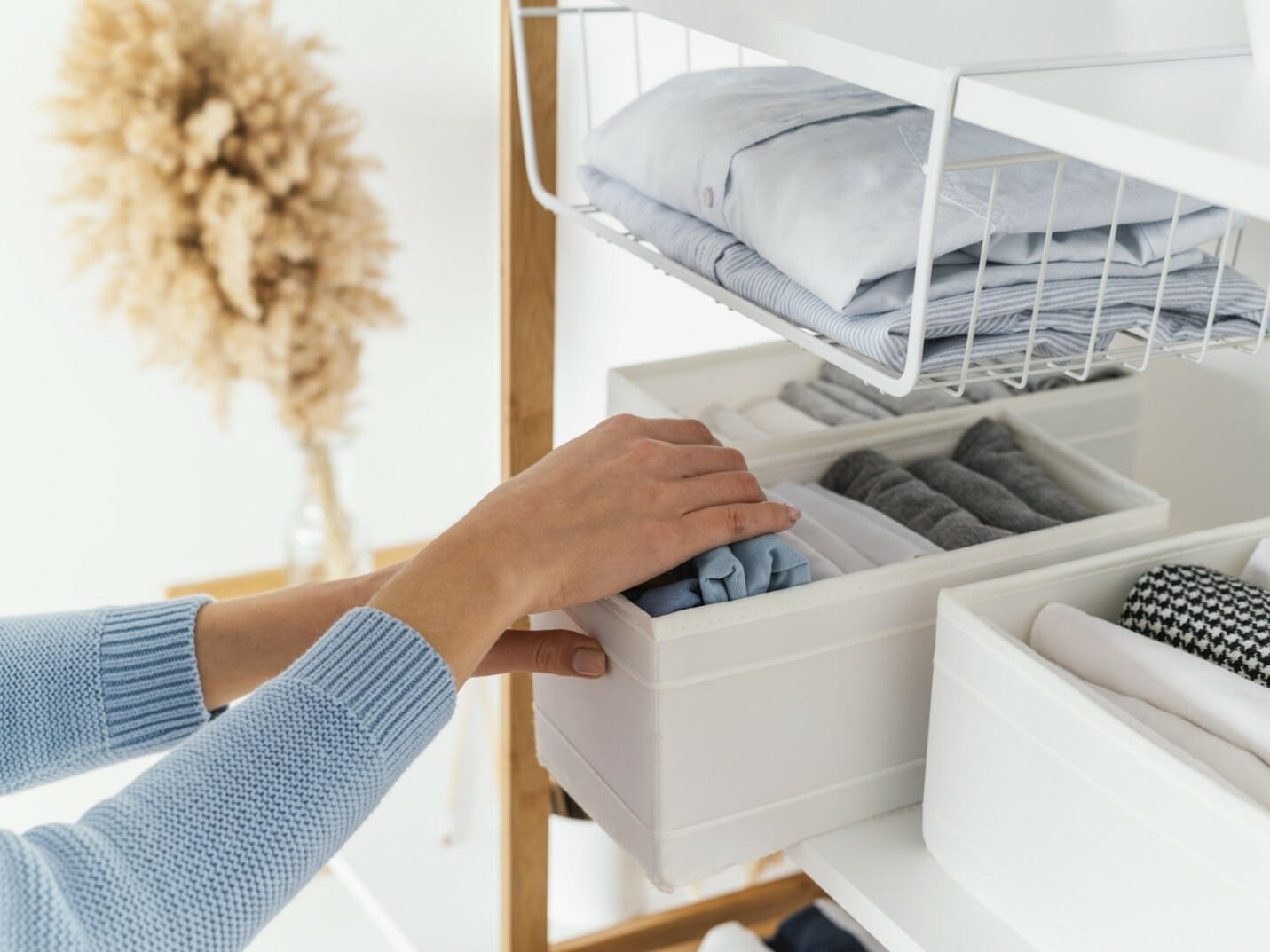
If the idea of picking up all the clutter for a house cleaner to come over is overwhelming, an organizer may be the helper you need.
Professional organizers consult with you about how best to manage and store your belongings. They may physically come into your home or meet with you virtually to help you come up with a clutter strategy.
Organizers will help you troubleshoot the reasons for your clutter, find strategies to deal with it, and give you accountability to take care of it.
Depending on the organizer and whether they meet with you in person or virtually, they may help you move items, but they aren’t cleaners. Their primary goal is to help you find your own sustainable strategy for a decluttered space.
Similar to hiring a house cleaner, you should start your hunt for a professional organizer by asking around to friends and neighbors. Community mailers and social media groups are also good places to check, and finally, a good, old-fashioned Google search can help you find reputable professionals in your area.
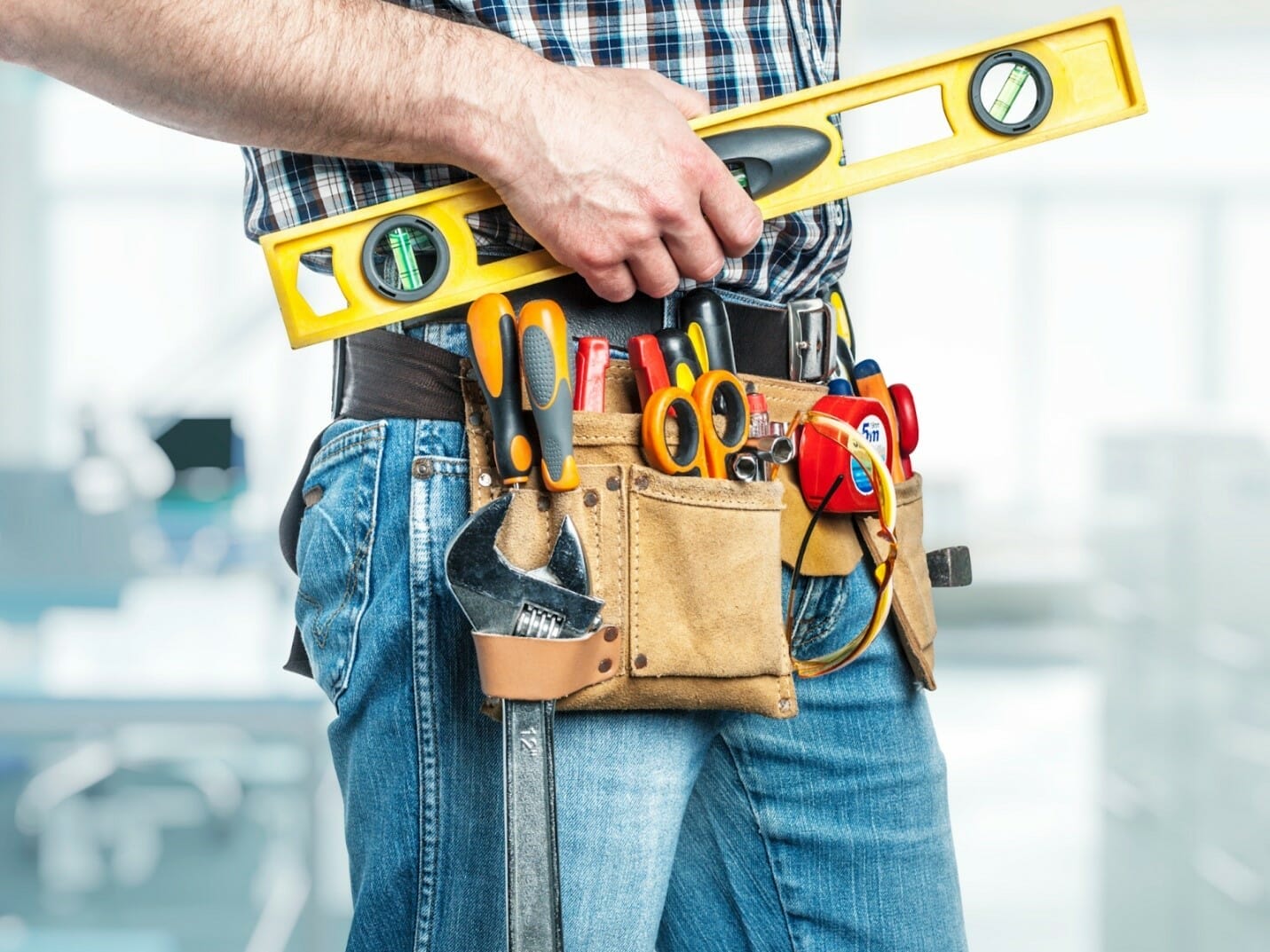
Sometimes, broken appliances or structures in the home can cause a barrier to cleaning. It can feel like you can’t get things done because there is an issue you can’t fix on your own.
A handyman can take care of minor repairs in your home.
They can also install shelves—a great asset when you’re trying to be more organized!
Check out websites like Angi (formerly Angie’s List) or Thumbtack for reviews of handyman services ranging across all sorts of specialties. Community social media groups, mailers, and friends and neighbors are all also good places to turn for recommendations.
Often, our cleaning struggles stem from a deeper source.
Many of us are not just messy—we may be unmotivated due to depression or anxiety, struggling to focus on cleaning due to ADHD, or dealing with any number of other hurdles. In these cases, hiring a cleaning service is putting a bandaid over the problem.

To see lasting change, it can be helpful to enlist a mental health specialist to help you find your equilibrium. There are a wide variety of resources available. For a complete list, check out this article from the National Institute of Mental Health.
Even if you don’t have a formal mental health diagnosis, talking with someone about ways to cope with the stresses of daily life can make a difference in your motivation and ability to troubleshoot problems.
You can find mental health support from a variety of practitioners, including:
Sometimes, your home needs a coordinated team to tackle all the different areas in need of cleanup and repair.
If your home has so much clutter that:
You’ll want to enlist help that can safely and efficiently take on the challenge.
When you work with a specialized cleaning team like Bio-One, you’ll start out by meeting one of our team members to discuss your goals and situation.

They’ll investigate any safety hazards and ask you questions about what you want them to preserve in the home, what should be disinfected, and other goals unique to you.
When the team begins work in your home, they will do all in their power to keep their work discreet, including changing into protective gear in your backyard or garage if desired and using unmarked vehicles.
You will be looped in throughout the process of Bio-One’s decluttering and deep-cleaning work.
Imagine the relief you’ll feel knowing your home is in good hands.
If Bio-One’s cleanup services sound like what your home needs, give us a call anytime at (303) 946-8834. Our lines are open 24 hours a day, 7 days a week, 365 days a year. You can also fill out a service request on our website.
There’s no shame in needing help with your home. At Bio-One we’re here to guide and support you through the process.